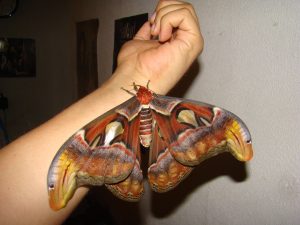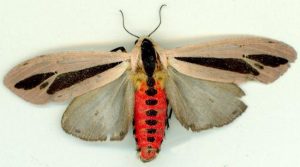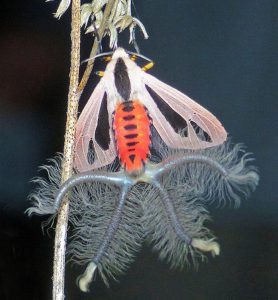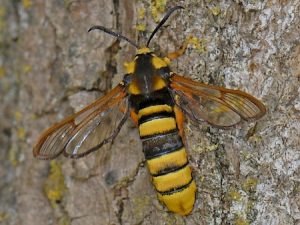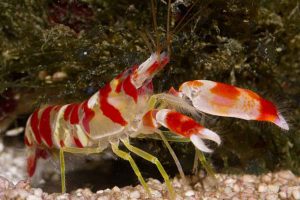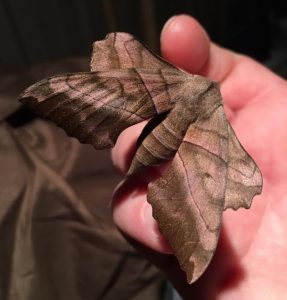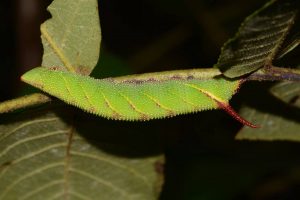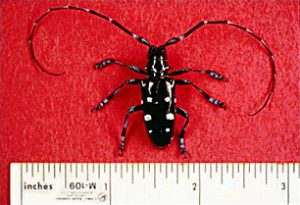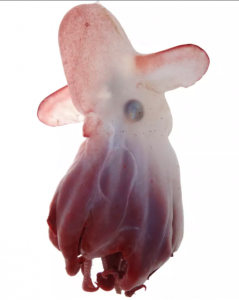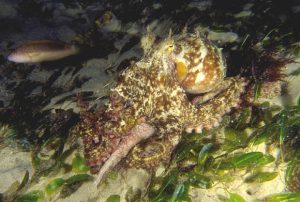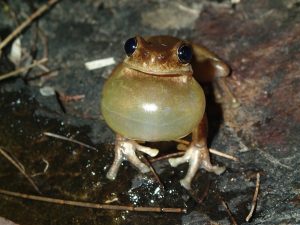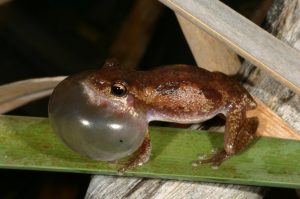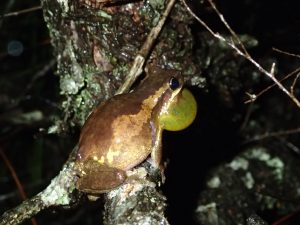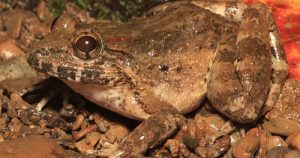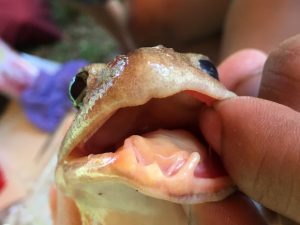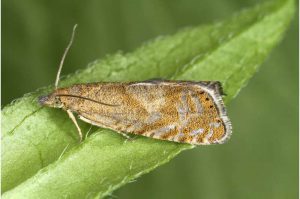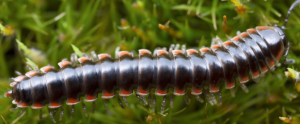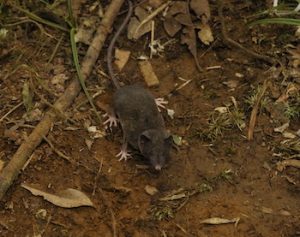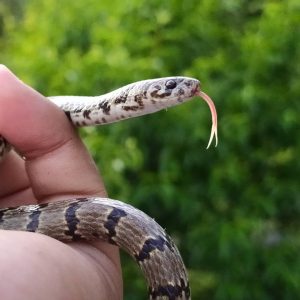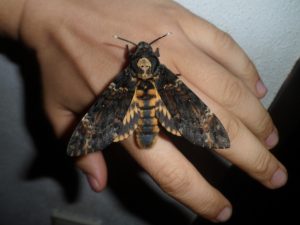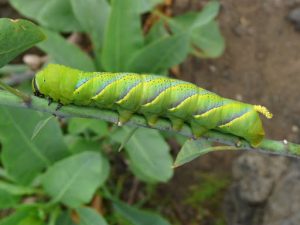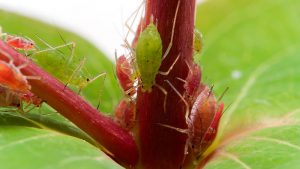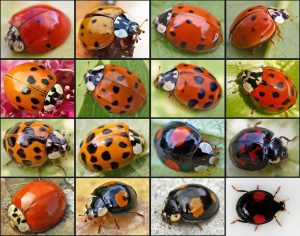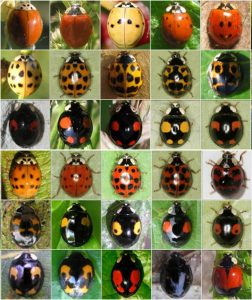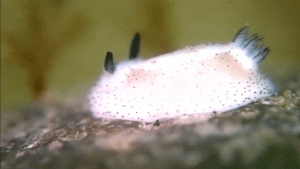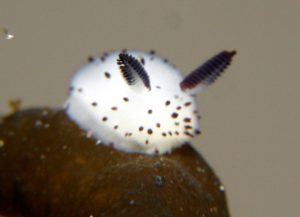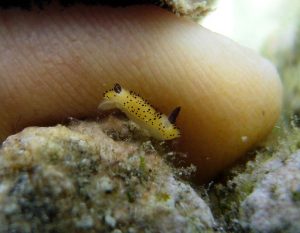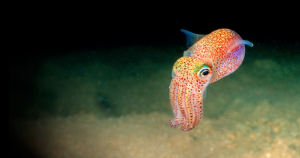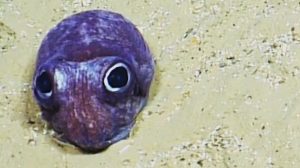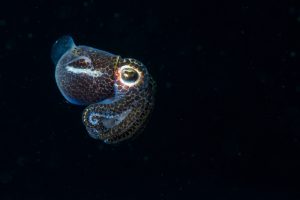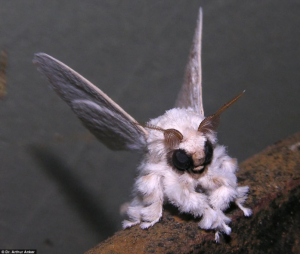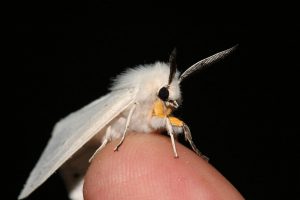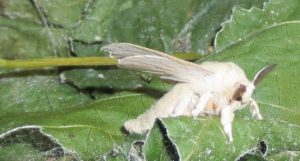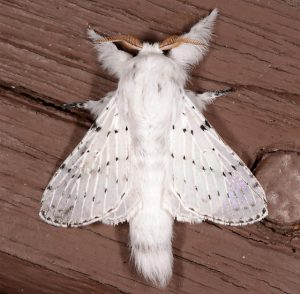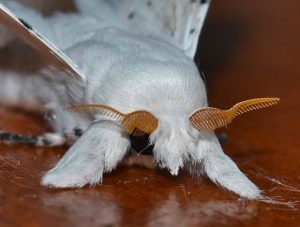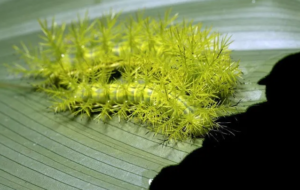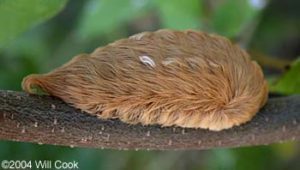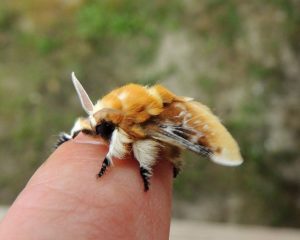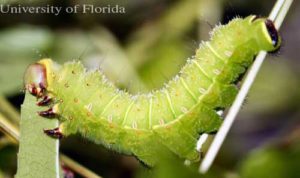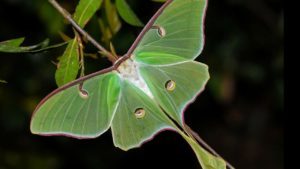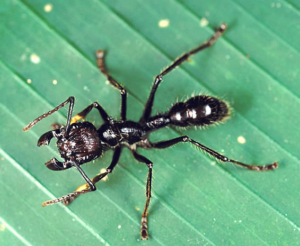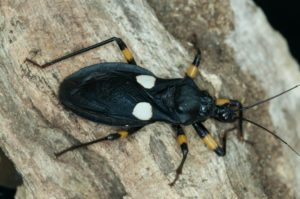Podcast: Play in new window | Download (Duration: 21:17 — 22.5MB)
Subscribe: | More
Thanks to Nicholas and Juergen for their suggestions! Let’s learn about some insects that migrate and swarm!
Further listening:
The Animal Migrations Patreon episode (it’s unlocked so anyone can listen)
Further reading:
Ladybugs Are Everywhere!
Monarch butterflies gathered in winter:

The painted lady butterfly:
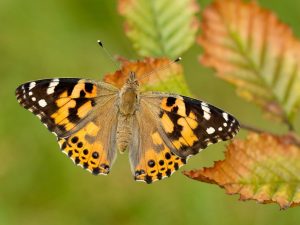
The bogong moth:
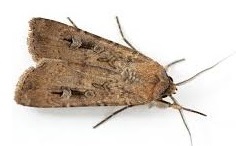
The globe skimmer dragonfly:
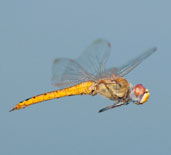
Ladybugs spend the winter in bunches, sometimes in your house:
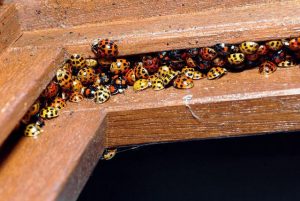
A stink bug, one of many potentially in your house:
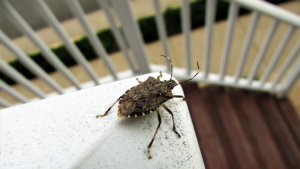
This person is not afraid of locusts even though I would be freaking out:

A field in Australia being eaten by locusts (the brown part):

Show transcript:
Welcome to Strange Animals Podcast. I’m your host, Kate Shaw.
Let’s learn about some insects this week, but not just any old insects. Let’s learn about insects that swarm. Thanks to Nicholas and Juergen for suggestions that led to this episode!
Nicholas suggested long-distance migrators ages ago, and I did do an episode about migration for a Patreon episode. I’ve unlocked that episode so anyone can listen to it, with a link in the show notes. I’ve also used some of the information in that episode for this one, specifically the part about monarch butterflies.
In fact, let’s start with the monarch butterfly. The monarch is a good-sized butterfly, with orange and black wings with white spots along the edges and a wingspan of up to four inches, or 10 cm. It lives in many parts of the world, but only the North American subspecies of monarch migrates.
Every autumn, monarch butterflies living in North America, where they breed, head south to winter in the mountains of central Mexico, a trip that can be as long as 3,000 miles, or 4,800 km. They spend the winter in oyamel fir trees, millions of butterflies in the branches. When spring arrives, the butterflies head north again, but they don’t get all the way back to their original range. If they’re lucky, they reach Texas, where they mate and lay eggs on milkweed plants before dying. The caterpillars hatch, eat up the milkweed, spin cocoons, and emerge transformed into new butterflies that continue the flight north, deeper into North America. But those butterflies don’t make it all the way to their parents’ home range either. They too stop to mate, lay eggs, and die. It can take four or five generations for monarch butterflies to reach Canada and other distant parts of North America, and by that time it’s autumn again. The butterflies fly back to Mexico.
Butterflies heading north live out their entire life cycle in only five or six weeks, but the butterflies that return to Mexico live up to eight months. Researchers think the northward migration follows the blooming of milkweed plants. Milkweed contains toxins that make the monarchs poisonous to a lot of animals, but some birds and a lot of insects will eat the caterpillars. Some populations of North American monarchs overwinter in California, Arizona, or Florida instead of Mexico.
The North American monarch is declining in numbers, probably mostly due to the decline of milkweed. The best way to help the butterfly is to plant milkweed in any area you don’t want to mow very often.
While the monarch migration is astounding, it’s not the only butterfly that migrates. A small, pretty butterfly called the painted lady lives throughout much of the world, even the Arctic, but not South America for some reason. Some populations stay put year-round, but some migrate long distances. One population winters in tropical Africa and travels as far as the Arctic Circle during summer, a distance of 4,500 miles, or 7,200 km, which takes six generations. The butterflies who travel back to Africa fly at high altitude, unlike monarch butterflies that fly quite low to the ground most of the time. Unlike the monarch, painted ladies like many kinds of flowers, not just one plant, and they don’t always migrate every year.
In Australia, some populations of the bogong moth migrate some 600 miles, or 965 km. It’s a dark brown moth with a wingspan of up to two inches across, or 5 cm, and naturally enough, it migrates at night. Unlike the butterflies we’ve talked about, the migration doesn’t take successive generations. In spring the moths fly from the lowlands into the mountains, where they spend the summer mostly hiding in caves and other dark places. The bogong moth actually breeds and lays eggs in winter, because it doesn’t like hot weather.
Birds and some other animals depend on the moth migration for food, when they can eat a lot of big fat moths and get lots of protein. Some Aboriginal tribes of southeastern Australia also used to follow the migration into the mountains, where they would gather lots of moths from caves and roast them. Apparently they taste like nuts.
But the insect that migrates farthest is a species of dragonfly. The globe skimmer, also called the wandering glider or winged wanderer, lives in much of the world, but not in Europe. Researchers think it can’t cross the Sahara to reach Europe, but it can cross the Himalayas. It’s the highest-flying dragonfly known as a result. Even though it’s a small dragonfly, less than two inches long, or 4.5 cm, it has big wings, with a wingspan of almost three and a half inches, or 8 and a half cm. Its abdomen is usually yellow, although males are sometimes more reddish. It’s a strong, fast flier and that’s a good thing, because an individual dragonfly may fly as far as 3,700 miles, or 6,000 km, during migration.
Different populations migrate to different areas, naturally, but scientists have compared the genetic profiles of globe skimmers from different parts of the world and discovered that they’re all extremely similar. This can only happen if the dragonflies from different continents are breeding with each other, which suggests that they’re traveling even farther than we already know. The globe skimmer crosses the Indian Ocean between Asia and Africa, and it shows up on incredibly remote islands, so obviously it’s able to cross vast distances without too much trouble.
The reason the globe skimmer migrates is that it needs fresh water to lay its eggs in. Many parts of the world have well-defined rainy seasons and dry seasons, and the globe skimmer wants to stay where it’s rainy. As it travels, it meets up with other dragonflies, mates, and lays eggs as it goes. The eggs develop quickly and the larvae mature within a few weeks, and immediately join the migration.
The reason the globe skimmer is able to migrate is because of its big wings and flying style. Its wings are broad as well as long, which allows it to ride the wind like a surfer riding a wave. It can glide long distances without needing to move its wings, which saves a lot of energy.
But most insects don’t exactly migrate, or at least they only travel relatively short distances to find a place to winter. The ladybug, for instance.
Juergen emailed me a few months ago about meeting one ladybug outside, then going inside to find a bajillion ladybugs. This happens a lot in autumn and it’s amazing how such a pretty little insect can suddenly seem horrifying when there are hundreds or even thousands of them in your home. It happens because many species of ladybug gather together to spend the winter in a sheltered area. Usually the sheltered area is a forest floor or a rock with lots of crannies for them to hide in. But sometimes it’s your house.
The outside of a light-colored house reflects heat from the sun, which is good for your house but which also attracts ladybugs. When a ladybug finds a nice place to spend the winter, it releases pheromones that attract other ladybugs, and before you know it, your house is ladybug central. Even if you bring in an exterminator to get rid of the bugs, the pheromones remain and will continue to attract ladybugs for years. All you can do is make sure ladybugs can’t get into your house by sealing up every little crack and gap. If the ladybugs do remain, a lot of them will probably die because most houses are too dry for them in winter. The ones that do survive will leave in spring, and at least they don’t eat anything while they’re hibernating. Ladybugs eat aphids and other plant pests during warmer months, so they’re helpful to gardeners and farmers. There are special traps you can get that attract ladybugs and hold them inside until you take them out and release them.
Another insect, commonly called the stinkbug for the nasty odor it releases if it feels threatened, also called the shield bug for its shape, also sometimes comes into houses to spend the winter, sometimes in huge numbers. The most common species in North America these days is the brown marmorated stinkbug, which is a mottled brown with small black and white markings to help it blend in with tree bark. It can grow up to three-quarters of an inch long, or two cm, and is big and heavy and a very clumsy flyer.
The brown marmorated stinkbug is an invasive species from Asia that arrived in North America in the 1990s and has spread throughout the continent, especially the eastern United States. It eats plants and can destroy fruit crops and other crops like beans and tomatoes. So unlike the ladybug, it’s not a beneficial insect to humans. But despite its bad smell, it’s not dangerous to humans or pets. The stinkbug will often appear in your house in fall but also in spring, when it emerges from its little hiding spot in your house and tries to find its way outside.
Finally, let’s look at an infamous swarming insect, the locust. Locusts are responsible for untold thousands of humans dying of starvation when clouds of them sweep through a location, eat up every scrap of food they can find, and move on when all the food is gone. But what are locusts, and why do they do this?
The locust is a type of grasshopper. Specifically, it’s one of several species of short-horned grasshoppers. Ordinarily the grasshoppers are no different from other grasshoppers. But occasionally there’s a drought where a population of the grasshoppers live, and after the drought is over and the plants that died back start to grow really fast, the grasshoppers change.
First, the grasshoppers start to breed much more than usual. When those eggs hatch, the nymphs, which is what baby grasshoppers are called, stay together in groups instead of dispersing and start moving together. They don’t have wings until they grow up so they just hop together and meet up with more and more nymphs. Once they metamorphose into adult grasshoppers, they’re called locusts although they’re still the same grasshoppers as before, just with different behaviors. Some species also look a little different during swarming seasons, often larger than usual and sometimes with different coloration or markings.
Many of these species of grasshopper are large, up to four and a half inches long, or 11 cm, with large wings that make them strong fliers. The swarms can fly up to 93 miles a day, or 150 km, and land when they find a lot of food, which may be crops planted by humans. After the swarm has eaten everything it can find, it moves on to find more. It also leaves behind lots of eggs that soon hatch into new grasshopper nymphs that eat anything that’s started growing again.
If you’re wondering how even a whole bunch of grasshoppers can cause people to starve to death, you don’t have an idea yet of the size of the swarms. Locust swarms can contain tens of billions of grasshoppers. That’s billion with a B. An individual swarm can easily cover more than 100 square miles, or 260 square km, and when they land, they will literally eat every growing plant down to the ground, every single leaf, every single blade of grass, everything. Not only is there nothing left of crops when a locust swarm has come through, there’s no grass or leaves for animals to eat.
The largest locust swarm that we know of was seen in 1875 in the western United States. The swarm covered an estimated 198,000 square miles, or 510,000 square km. That’s larger than the entire state of California. There may have been over 12 trillion individual grasshoppers in that swarm.
This was the Rocky Mountain locust, which was adapted to the prairies of North America. As white settlers pushed west and planted crops where there had formerly only been prairie grass and other prairie plants, the farmers were repeatedly visited by locusts that ate not just their crops, but everything else they could find. The locusts ate leather, wool, wood, and there are even reports of locusts eating the clothes people were actually wearing. There were so many locusts that they couldn’t be avoided. They would get into houses and eat up food in the pantries, along with blankets and clothing. People tried everything they could think of to destroy the locusts, from setting entire fields on fire to building horse-drawn bulldozers that smashed the locusts flat. But nothing helped. There were too many of them.
But as the years passed and more and more prairie was converted to fields or pastures for cattle, and more cities and towns grew up in the west, the Rocky Mountain locust started to decline in numbers. In 2014 it was declared extinct, but by then no one had seen a Rocky Mountain locust since 1902. It’s possible they’re still around in small numbers, but a combination of habitat loss and active eradication of the insect probably drove it to extinction. Another species of North American grasshopper, the high plains locust, is rare these days and almost never swarms, with the last big swarm reported in the 1930s.
But there are plenty of other locusts throughout the world, reported throughout recorded history, including the ancient Egyptians, ancient Greeks, and ancient Chinese. Plagues of locusts feature in the Quran and the Bible. The most well known species are the desert locust, which lives in Africa and parts of the Middle East and Asia, and the migratory locust, which lives in Africa, Asia, Australia, New Zealand, and Europe, although it’s quite rare in Europe these days.
Not all locust swarms are enormous, of course, but even a small swarm can destroy local farms and pastures. In the days before easy communication and travel, this could mean people starved in one village even if the next village over was fine. Researchers estimate that a locust swarm that’s only one square kilometer in size, which is less than half a square mile, or about 250 acres, can eat as much as 35,000 people in a single day. WHOA, I did not realize when I wrote that that it would make it sound like the locusts were eating people. Locusts don’t eat people, they don’t hurt you, but the locusts eat as much food as 35,000 people do. That’s what I meant.
The thought of locust swarms is scary, but fortunately it doesn’t happen every year or even every decade. But it does still happen. In 1988, locusts swarming in Africa crossed the Atlantic Ocean and arrived in South America. This year, 2020, started out with desert locusts swarming in parts of north and east Africa in January, spreading into parts of Asia by May. In November, some localized swarms of locusts were spotted in parts of Australia after heavy rains, especially in west and northwest Victoria.
These days, though, people have the advantage of early warning. Locust swarms can be tracked by satellite and drones, people whose crops are eaten up can have food shipped in to help keep anyone from starving, and there are pesticides that can kill a lot of locusts in a short amount of time. But a new experimental biological control has been working really well. The dried spores of a fungus that kills grasshoppers are sprayed on the ground where locusts are laying eggs, since grasshoppers lay their eggs in soil or sand. The fungus kills the grasshoppers and stays on the ground to kill the ones that hatch or arrive later. Best of all, unlike chemical pesticides, the fungus doesn’t kill other insects.
And don’t forget, of course, that the locust is edible. Cultures throughout much of the world traditionally ate locusts and they’re still considered delicacies in many places. They’re also more nutritious than meat from mammals like cattle. Besides, if locusts arrive and eat all your food, it’s just smart to eat the locusts that ate your food. You gotta get that food back somehow.
You can find Strange Animals Podcast at strangeanimalspodcast.blubrry.net. That’s blueberry without any E’s. If you have questions, comments, or suggestions for future episodes, email us at strangeanimalspodcast@gmail.com. If you like the podcast and want to help us out, leave us a rating and review on Apple Podcasts or just tell a friend. We also have a Patreon at patreon.com/strangeanimalspodcast if you’d like to support us that way.
Thanks for listening!
